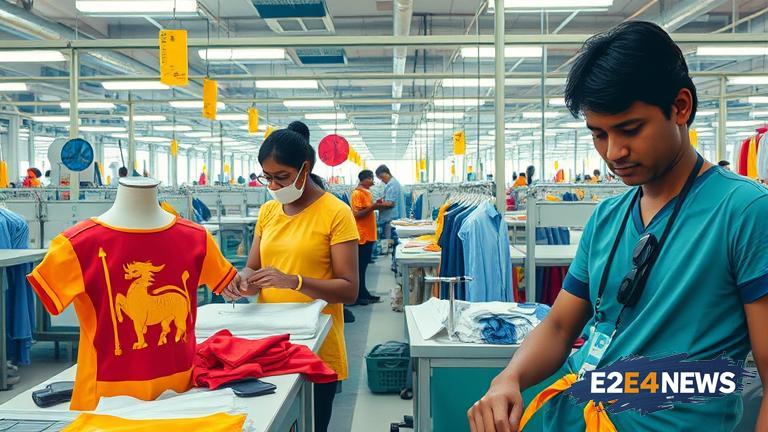The garment industry in Sri Lanka is currently facing a period of uncertainty due to tariff-related issues. The industry, which is a significant contributor to the country’s economy, is struggling to cope with the challenges posed by tariffs imposed by other countries. The tariffs, which are taxes on imported goods, are making it difficult for Sri Lankan garment manufacturers to export their products to other countries. As a result, the industry is experiencing a decline in exports, which is having a negative impact on employment and the overall economy. The garment industry is one of the largest employers in Sri Lanka, and the decline in exports is leading to job losses and factory closures. The industry is also facing competition from other countries, such as Bangladesh and Vietnam, which are offering cheaper labor and more favorable trade agreements. The Sri Lankan government is trying to negotiate with other countries to reduce or eliminate tariffs on garment exports, but so far, these efforts have been unsuccessful. The industry is also facing challenges due to the COVID-19 pandemic, which has disrupted global supply chains and reduced demand for garments. The pandemic has also led to a shortage of raw materials, which is further exacerbating the problems faced by the industry. Despite these challenges, the garment industry in Sri Lanka is still a significant contributor to the country’s economy, and the government is working to support the industry through various initiatives. The government has implemented policies to promote the industry, such as providing tax incentives and investing in infrastructure. However, more needs to be done to address the tariff issues and support the industry in the long term. The industry is also working to diversify its products and markets, in order to reduce its dependence on traditional markets and products. This includes investing in new technologies and manufacturing processes, as well as exploring new markets in countries such as the US and EU. Overall, the garment industry in Sri Lanka is facing significant challenges, but with the right support and policies, it is possible for the industry to recover and thrive in the future. The industry is a vital part of the country’s economy, and it is essential that the government and industry stakeholders work together to address the challenges faced by the industry. By doing so, it is possible to create a more sustainable and competitive industry that can benefit the economy and people of Sri Lanka. The future of the industry depends on the ability of the government and industry stakeholders to work together to address the challenges faced by the industry and to create a more favorable business environment. This includes investing in education and training programs, as well as providing support for small and medium-sized enterprises. It also includes working to improve the country’s infrastructure, such as roads and ports, in order to reduce transportation costs and improve efficiency. By taking these steps, it is possible to create a more competitive and sustainable garment industry in Sri Lanka, which can benefit the economy and people of the country.
